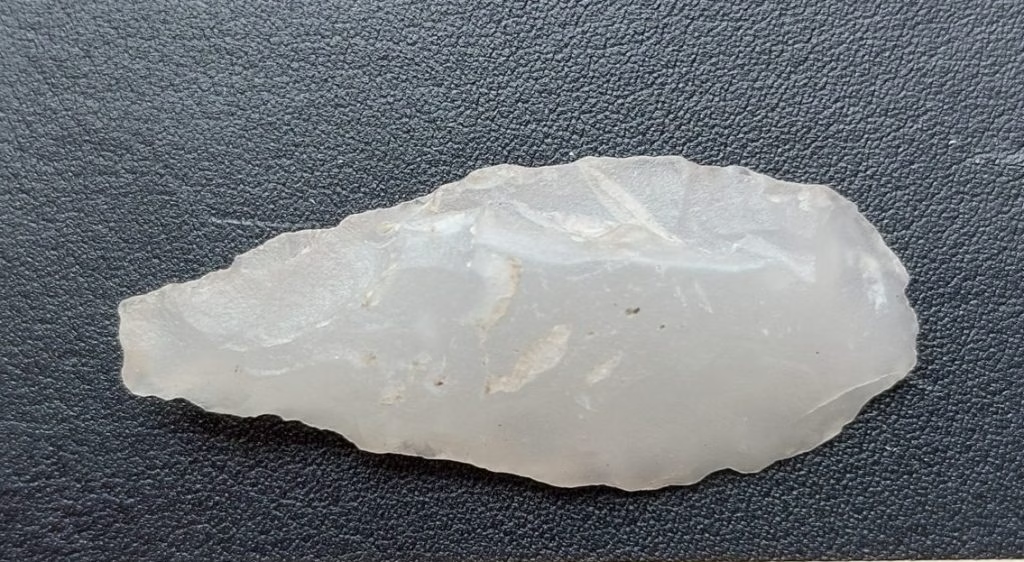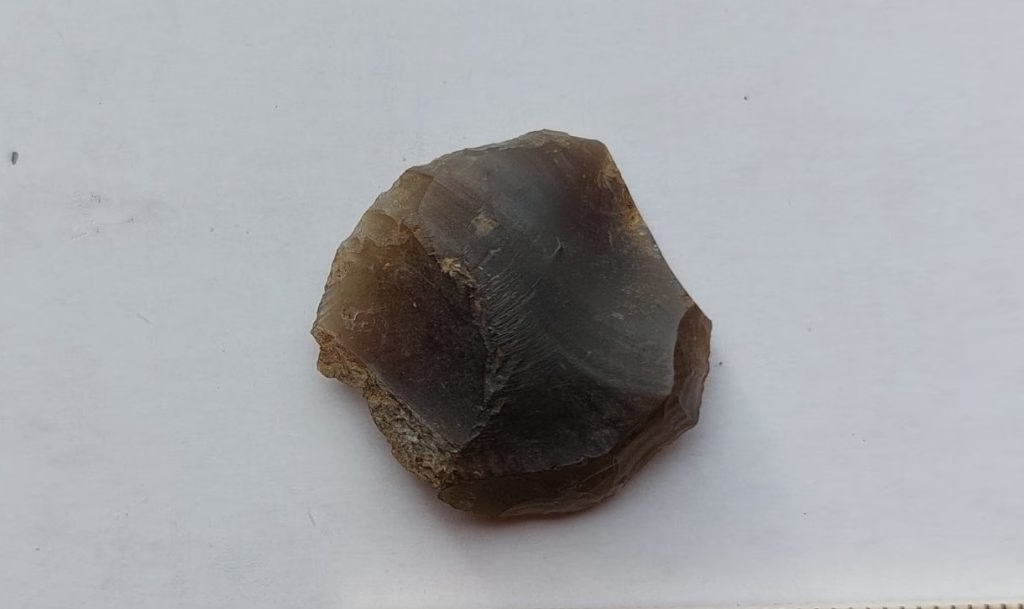A remarkable archaeological discovery has been made in northern Sweden: a finely crafted arrowhead made from white quartzite, dating back to the Late Bronze Age, has been unearthed near Skellefteå. The artifact stands out not only for its age but also for the exceptional craftsmanship involved in its creation.
The find was made during an ongoing excavation in the Hedkammen area, just south of Skellefteå, where archaeologists have uncovered over 16,000 square meters of land. More than 300 archaeological features have been registered so far, including hearths, cooking pits, and stone structures—some located near what were once natural harbors used around 2,500 years ago.
Masterful Stone Craftsmanship
Among various artifacts such as burnt bones, ceramics, and stone tools, the white quartzite arrowhead is of particular interest. Experts describe it as bifacially worked using a pressure flaking technique—a method that demonstrates highly skilled stone craftsmanship rarely seen from this era. Quartzite, especially white quartzite, is known to be difficult to work with, making the arrowhead a rare and valuable discovery.

Evidence of a Rich Prehistoric Settlement
The excavation has revealed traces of human activity spanning from around 500 BCE to the late medieval period. The presence of imported flint, ceramic fragments, and building remains suggest the area was not only inhabited but also possibly part of larger trade networks during the Late Bronze and Early Iron Ages.

A Window Into Northern Sweden’s Ancient Past
This rare white quartzite arrowhead provides new insight into the technological abilities and daily lives of people in prehistoric northern Sweden. As excavations continue in the coming months, archaeologists hope to uncover more finds that will help piece together the region’s ancient history.
The Hedkammen site is quickly becoming one of Västerbotten’s most important archaeological locations, shedding light on life thousands of years ago.




